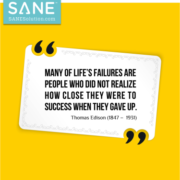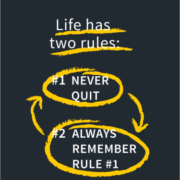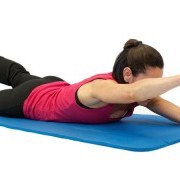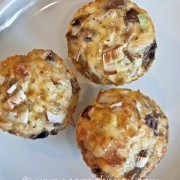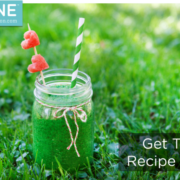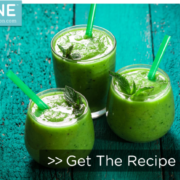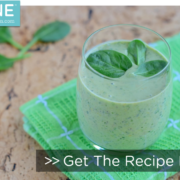Disturbing Data Demonstrating That Low-Fat Made Us Fat
Uncategorized
“Saying we become fat by eating fat is like saying we become green by eating green vegetables.” — Paraphrase of Uffe Ravnskov, MD, Ph.D.
We are told that sugar-laden muffins, nutritionally neutered toast, and insulin-exploding juice are part of a balanced, nutritious breakfast because they are low in fat. After decades of this many of us now look at food and ask ourselves, “Is this low in fat?” If the answer is yes, we think it is healthy. Yet foods that contain fat are not necessarily unhealthy. Researcher M. Leosdottir from Lund University stated:
“Most researchers today agree on total fat intake not being a risk factor for cardiovascular disease or cancer.”
In addition to not killing us, foods containing fat do not make us fat. We’ve been told they do because a gram of fat contains more calories than a gram of carbohydrate or protein. Fat has nine calories per gram while protein and carbohydrate only have four. The problem is that fat’s higher quantity of calories does not mean eating it causes us to store body fat. That thinking is rooted in the Calories In – Calories Out theory of fat loss, which we now know is wrong.
According tothe National Academy of Sciences:
“Obesity itself has not been found to be associated with dietary fat in either inter- or intra- population studies.”
Harvard researcher W.C. Willett adds
“There is no good evidence linking dietary fat with excess weight. In fact, there is plenty of evidence showing that the percentage of calories from fat is not the culprit leading to excess weight…In country-to-country surveys across Europe, women with the lowest fat intake are the most likely to be obese, while those with the highest fat intake are the least likely.”
A fellow researcher at Harvard, F.B. Hu, makes a similar point:
“Although reduction in percentage of calories from dietary fat intake is commonly recommended for weight loss, long-term clinical trials have provided no good evidence that reducing dietary fat per se can lead to weight loss.”
This data seems counterintuitive because we’ve been led to believe that eating fat encourages overeating. We’ve been misinformed.
Think back to Satiety. Water, fiber, and protein play the biggest role in the Satiety of food, and Satiety determines how many calories we eat. Notice how there is no mention of fat there. Many water-, fiber-, and protein-packed foods contain fat. For example, seafood, meat, nuts, and flax seeds all contain fat. But when we focus on eating less fat, we replace these high-Satiety foods with low-Satiety starches and sweets. Since low-Satiety foods require more calories to fill us up, this swap causes us to eat more—not less—calories. So, far from discouraging overeating, avoiding SANE foods that contain fat encourages overeating.
The last four decades of data tell the same story. We were told to avoid eating fat, so we reduced our relative intake of fat, increased our intake of starches and sweets, increased our total caloric intake, and ended up heavier and diabetic as a result.

Less Natural Foods Containing Fat, More Overeating
Less Natural Foods Containing Fat, More Body Fat
How We Eat vs. Our Incidence of Weight Gain
How We Eat vs. Our Incidence of Diabetes
The government knows this too. The Centers for Disease Control and Prevention (CDC) reported:
“During 1971-2000, a statistically significant increase in average energy intake occurred…The increase in energy intake is attributable primarily to an increase in carbohydrate intake.”
Even the authors of the government’s guidelines—the U.S. Department of Agriculture—have gone on record stating that since the 1970s the major dietary trend has been a:
“greatly increased consumption of carbohydrates.”
They found that starch consumption had increased by nearly sixty pounds per person per year, and sweetener consumption had increased by nearly thirty pounds. That is ninety additional pounds of low-quality low-Satiety food—every year.
The emphasis on low fat leads to inSANEity and misses an important point. Long-term health and fat loss does not result from diets low in fat, carbohydrate, or protein. Fat is not evil. Carbohydrates are not bad. And protein is not dangerous. The best way to burn body fat is to be balanced andSANE.
However, when you look at the government’s pyramid and plate, balance is nowhere to be found:
The Food Guide Pyramid/MyPyramid
MyPlate
How are these balanced diets? They are high in carbohydrates and low in everything else. Consider the high-fat Atkins diet. It is called “high-fat” because it advises individuals to get 65% of their calories from fat. Look at the USDA’s pyramid and plate diets that advise us to get 65% of our calories from carbohydrate. Doesn’t that make them high-carbohydrate diets? This could be why the January 13, 2011, edition of USA Today poked fun at the 72% of Americans who claimed to eat a balanced diet. The implication: “How could 70% of you be overweight if you ate a balanced diet?” We could easily be overweight if the “balanced” diet we are told to eat by the government is actually out of balance.
This imbalance exists in other guidelines as well. The American Heart Association Nutrition Committee calls a 40% carbohydrate, 30% fat, and 30% protein diet a “low-carbohydrate/very-high-protein diet.” Since when does 40:30:30 indicate that anything is very high?
Balanced
Typical
Government Recommended
What could be the reason for this confusion? The answer lies in another myth that has been proven false: eating foods that contain fat leads to unhealthy cholesterol levels. We’ll dig into this cholesterol confusion in the next post.
- 2000 U.S.DA DietaryGuidelines: http://www.cnpp.usda.gov/Publications/DietaryGuidelines/2000/2000DGProfessionalBooklet.pdf
- 2005 U.S.DA Dietary Guidelines: http://www.cnpp.usda.gov/Publications/DietaryGuidelines/2005/2005DGPolicyDocument.pdf
- 2010 U.S.DA Dietary Guidelines: http://www.cnpp.usda.gov/DGAs2010-PolicyDocument.htm
- Based on NHANES data. Int J Obes 1998;22:39-47. JAMA 2002;288:1723. MMWR 2004;53:80-82.
- Based on NHANES data. MMWR 2004;53:80-82. Diabetes Care 2004;27:2806.
- Bell EA, Rolls BJ. Energy density of foods affects energy intake across multiple levels of fat content in lean and obese women. Am J Clin Nutr. 2001 Jun;73(6):1010-8. PubMed PMID: 11382653.
- Carey, Anne R., and Paul Trap. “Stretching the Truth.” USA Today 13 Jan. 2011, sec. USA Today Snapshots: 1. Print.
- Centers for Disease Control and Prevention (CDC). Trends in intake of energy and macronutrients–United States, 1971-2000. MMWR Morb Mortal Wkly Rep. 2004 Feb 6;53(4):80-2. PubMed PMID: 14762332.
- Centers for Disease Control and Prevention, National Center for Health Statistics, Division of Health Interview Statistics, data from the National Health Interview Survey. U.S. Bureau of the Census, census of the population and population estimates. Data computed by the Division of Diabetes Translation, National Center for Chronic Disease Prevention and Health Promotion, Centers for Disease Control and Prevention.http://www.cdc.gov/diabetes/statistics/prev/national/tnumage.htm. http://www.cdc.gov/diabetes/pubs/pdf/ndfs_2007.pdf. http://www.cdc.gov/diabetes/statistics/slides/long_term_trends.pdf
- Cordain, Loren. The Paleo Diet: Lose Weight and Get Healthy by Eating the Food You Were Designed to Eat. New Ed ed. New York, NY: Wiley, 2002. Print.
- Diet and Health: Implications for Reducing Chronic Disease Risk. Washington, D.C.: National Academy, 1989. Print. & P.J. Skerrett, and W.C. Willett. Eat, Drink, and Be Healthy: The Harvard Medical School Guide to Healthy Eating. Free Press Trade Pbk. Ed ed. New York City: Free Press, 2005. Print.
- Drewnowski A. The role of energy density. Lipids. 2003 Feb;38(2):109-15. Review. PubMed PMID: 12733741.
- Economic Research Service (ERS), U.S. Department of Agriculture (USDA). Food Availability (Per Capita) Data System. http://www.ers.usda.gov/Data/FoodConsumption.
- Flegal KM, Carroll MD, Ogden CL, Curtin LR. Prevalence and trends in obesity among U.S. adults, 1999-2008. JAMA. 2010 Jan 20;303(3):235-41. Epub 2010 Jan 13. PubMed PMID: 20071471.
- Flegal KM, Carroll MD, Ogden CL, Johnson CL. Prevalence and trends in obesity among U.S. adults, 1999-2000. JAMA 2002;288:1723-7.
- GaryTaubes. Good Calories, Bad Calories ,Challenging the Conventional Wisdom on Diet, Weight Control, &Disease 2007 publication. New York: Alfred A Knopf,2007, 2007. Print.
- Hedley AA, Ogden CL, Johnson CL, Carroll MD, Curtin LR, Flegal KM. Prevalence of overweight and obesity among U.S. children, adolescents, and adults, 1999-2002. JAMA 2004;291:2847-2850.
- http://www.cdc.gov/diabetes/pubs/pdf/ndfs_2007.pdf. http://www.cdc.gov/diabetes/statistics/slides/long_term_trends.pdf
- http://www.cdc.gov/nchs/data/hestat/overweight/overweight_adult.htm
- Hu FB, Willett WC. Optimal diets for prevention of coronary heart disease. JAMA. 2002 Nov 27;288(20):2569-78. Review. PubMed PMID: 12444864.
- Leosdottir M, Nilsson PM, Nilsson JA, Månsson H, Berglund G. Dietary fat intake and early mortality patterns–data from the Malmö Diet and Cancer Study. J Intern Med. 2005 Aug;258(2):153-65. PubMed PMID: 16018792.
- Levine AS, Billington CJ. Dietary fiber: does it affect food intake and body weight? In: Fernstrom JD, Miller GD, eds. Appetite and body weight regulation: sugar, fat, and macronutrient substitutes. Boca Raton, FL: CRC Press, 1994:191–200.
- Ludwig DS, Pereira MA, Kroenke CH, Hilner JE, Van Horn L, Slattery ML, Jacobs DR Jr. Dietary fiber, weight gain, and cardiovascular disease risk factors in young adults. JAMA. 1999 Oct 27;282(16):1539-46. PubMed PMID: 10546693.
- Macaulay V, Richards M, Hickey E, et al. The emerging tree of West Eurasian mtDNAs: a synthesis of control-region sequences and RFLPs. Am J Hum Genet. 1999;64:232-249.
- National Institutes of Health. Clinical guidelines on the identification, evaluation, and treatment of overweight and obesity in adults–the evidence report. Obes Res 1998;6(Suppl 2):51S-209S.
- Obesity and leanness. Basic aspects. Stock, M., Rothwell, N., Author Affiliation: Dep. Physiology, St. George’s Hospital Medical School, London Univ., London, UK.
- Ogden CL, Carroll MD, Curtin LR, McDowell MA, Tabak CJ, Flegal KM. Prevalence of overweight and obesity in the United States, 1999-2004. JAMA 2006;295:1549-1555.
- Parks EJ, Hellerstein MK. Carbohydrate-induced hypertriacylglycerolemia: historical perspective and review of biological mechanisms. Am J Clin Nutr. 2000 Feb;71(2):412-33. Review. PubMed PMID: 10648253.
- Ravnskov, Uffe. Fat and Cholesterol Are Good for You. S.l.: GP, 2009. Print.
- Rolls BJ, Bell EA, Castellanos VH, Chow M, Pelkman CL, Thorwart ML. Energy density but not fat content of foods affected energy intake in lean and obese women. Am J Clin Nutr. 1999 May;69(5):863-71. PubMed PMID: 10232624.
- St Jeor ST, Howard BV, Prewitt TE, Bovee V, Bazzarre T, Eckel RH; Nutrition Committee of the Council on Nutrition, Physical Activity, and Metabolism of the American Heart Association. Dietary protein and weight reduction: a statement for healthcare professionals from the Nutrition Committee of the Council on Nutrition, Physical Activity, and Metabolism of the American Heart Association. Circulation. 2001 Oct 9;104(15):1869-74. PubMed PMID: 11591629.
- U.S. Department of Agriculture, Agricultural Research Service. 2007. Nutrient Intakes from Food: Mean Amounts and Percentages of Calories from Protein, Carbohydrate, Fat, and Alcohol, One Day, 2003-2004. Available: www.ars.usda.gov/ba/bhnrc/fsrg.
- What if It is All Been a Big Fat Lie? Gary Taubes.http://www.nytimes.com/2002/07/07/magazine/what-if-it-s-all-been-a-big-fat-lie.html

19 Balancing Benefits of This Two-Ingredient Morning Tonic
UncategorizedToday’s blog is from my friends at TheNutritionWatchDog and TheAlternativeDaily… leading publishers of very useful daily alternative health tips.
By Stephen Seifert, TheAlternativeDaily.com
Many of us have morning routines that are wonderful health practices — a morning meditation, a few yoga poses, a brisk walk around the neighborhood, or a delicious fruit-infused smoothie. Daily routines are vital to health and happiness, and this is especially true at the start of the day.
How about a quick and simple glass of warm lemon water with Himalayan salt? This simple drink can boost your morning health and wellness regimen — and it’s so easy to make. There are a number of professional athletes and Olympians who start their morning with lemon and salt water, which may say something about its effectiveness.
A 10-ounce glass of warm lemon water with Himalayan salt in the morning can increase your immune function, decrease uric acid to fight inflammation, improve digestion, and balance your body. These benefits can be attributed to the vitamin C content of the lemon juice as well as the essential minerals contained in Himalayan salt. This simple morning drink promotes vitality, health, and overall wellness, and may even improve your sex drive!
Let’s take a closer look at 19 of the balancing benefits of water, lemon, and salt, all in one cup.

Lemons are excellent for fighting inflammation. Lemons can help dissolve the uric acid in your joints, and also have been found to help build and repair tendons, ligaments, and bone. This anti-inflammatory property may be especially beneficial for people with rheumatoid arthritis and osteoarthritis, according to an American College of Physicians study on osteoarthritis, published in the Annals of Internal Medicine (2000).
Aids in proper food and water absorption. A daily glass of lemon water with Himalayan salt may provide a better overall mineral balance, which promotes proper food and water absorption in your body, allowing essential nutrients to get where they need to be.
Balances your body’s acidity (pH). The alkalizing effects of lemon and natural salt are highly useful for managing your body’s delicate pH balance, which is crucial for optimal functioning of the body’s systems.
Boosts immune function. One lemon serves up 139 percent of your daily value (DV) for vitamin C. Squeezing one lemon into your morning is a natural alternative to that vitamin C supplement you may be taking.
Like what you’re reading? Click Here to get your FREE “Eat Your Way Lean!” report!
It’s a detox for your cells. The all-natural Himalayan salt mixed with lemon juice and water helps to pull toxins from your cells, reducing cellular toxicity. This may reduce your risk for various chronic diseases, as well as make you feel generally awesome!
Reduces problematic cellulite. Natural salts like Himalayan salt have been used for centuries for skin care. Interestingly, most spa treatments for cellulitis contain some form of salt and/or citrus blend. A few daily gulps of lemon and salt water in the morning may firm up a few of those unsightly areas.
Clears up skin and adds a fresh glow. Using natural salt for skin problems, such as psoriasis and eczema, dates back to ancient Roman times. Roman emperor Marcus Aurelius’ doctor, Galen from Pergamum, used sea salt for skin diseases, according to Science Tribune (1999).
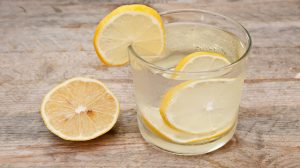
Useful for allergy season. It has been suggested that the combination of lemon and salt, specifically mixed into warm water, acts as a natural antihistamine for allergies. It may be the perfect alternative to those pink pills that leave you feeling drowsy.
Paves the way for better sleep. The natural hormone-balancing properties of lemon and Himalayan salt can be more than useful when it comes to bedtime. Getting the proper amount of sleep is essential for physical health, mental health, productivity, and much more. This hormone-balancing beverage can make an effective nightcap.
Helps controls blood sugar. The fiber content of lemons helps to balance blood glucose levels, which is useful for type 2 diabetes patients and prediabetics alike, according to a study published in the New England Journal of Medicine (2000).
Lemons may help detoxify your liver. Vitamin C is essential for producing glutathione, which plays a foundational role in detoxifying the liver. It also has antiseptic properties that are useful for liver function, as well.
Freshens breath! Lemon and Himalayan salt may not be the first things that come to mind when you think of fresh breath. However, the lemon and salt in this simple morning drink help kill the bad breath bacteria that build up while you’re sleeping.
May help you chill out. When you get stressed out, do not be so quick to reach for those prescription pills. You may be able to chill out and return to that state of Zen by boosting your vitamin C levels first thing in the morning.
Useful for reducing blood pressure. Lemons are not all about vitamin C and fiber. They also boast potassium, which is vital for flushing excessive sodium from the body.
Boost your libido! The vitamin C content and hormone-balancing properties of this morning beverage can help lift your mood. This might be all it takes to boost your libido, without the need for that little blue pill.
Gets you hydrated right out of the gate. Many people forget how important hydration is, especially after a seven or eight-hour sleep period with no water. Start your morning off right and get hydrated. The water, salt and zesty lemon will get your day off to the perfect start.
An antioxidant powerhouse vital for, well, everything! Lemon offers up a wealth of vitamins and minerals, while Himalayan salt boosts your mineral and trace mineral levels even more. The antioxidant and detoxifying properties of lemon saltwater pack a powerful, free radical knockout punch.
May improve your heart health. Lemons and real salt are both exceptional for increasing heart health on their own. However, when you combine the two into one vibrant morning drink, you get even more vital heart-thumping health benefits.
Natural salt supports electrochemical reactions in the body, while negative ions assist in healthy heart rhythm. Lemons are rich in vitamin C, which is, “associated with lower endothelial dysfunction in men with no history of cardiovascular disease or diabetes,” according to a study published in the American Journal of Clinical Nutrition (2006).
Promotes digestive health. A glass of warm lemon water with Himalayan salt before breakfast, or any meal, helps signal your liver to produce the essential bile needed to clean out harmful gut bacteria. The fiber content and natural salt will also promote digestion.
Are you ready to commit to this simple and health-promoting morning drink? I have been drinking warm lemon water with a little bit of Himalayan salt every morning for months, and I absolutely love it. My energy levels are up, and I feel as cool as a cucumber throughout the day.
Want to join me? Combine 10 ounces of filtered water with one whole lemon, squeezed, and half a teaspoon of Himalayan salt.
-Stephen Seifert
Stephen Seifert is a writer, professor, adventurer and a health & fitness guru. His flair for travel and outdoor adventure allows him to enjoy culture and traditions different than his own. A healthy diet, routine fitness and constant mental development is the cornerstone to Stephen’s life.
(The original article is found here)

3 Ingredient Daily Drink Tonics for Your Best Health
UncategorizedToday’s blog is republished from my friends at TheNutritionWatchDog and TheAlternativeDaily. They are both fantastic resources! Caution: If you are currently struggling with your weight, you will want to use natural SANE Sweeteners rather than honey.
By Liivi Hess, TheAlternativeDaily.com
As a nation, we’re fascinated with the concept of miraculous healing. Presumably, this miracle can come in the form of a pill, tea or a fantastically labeled elixir of health. Every day, millions of dollars are spent as people search for cures in the form of mystical pharmaceutical remedies that can banish all ailments and protect from disease.
Sadly, no one ever finds it. It seems that fancy packaging and slick marketing aren’t directly proportional to healing abilities. At best, these mass-produced, semi-synthetic, meticulously labeled products have but a minor placebo effect. At worst, they can actually make our health decrease, unbalance hormones and offset vital bodily functions.
It may come as a surprise to learn the mystical health tonic you’ve been searching for is much closer to home. As with many things in the health world, taking a step back and observing how our predecessors did things can be invaluable. The solution lies in simple, minimally processed, raw ingredients — ones that are selected for their natural health benefits, not as a small cog in a great machine comprised of many altered, unnatural ingredients.
Here are two three-ingredient concoctions that may just provide that miracle of health and healing you’ve been searching for.

Apple cider vinegar, honey and cinnamon super syrup
While very simple to make and with no rare or hard-to-find ingredients, this health tonic is wide-ranging in the benefits it bestows upon those who drink it. It can relieve constipation, reduce inflammation, support kidney function, promote heart health, prevent or fight urinary tract infections, protect against bacterial, fungal or viral attack and keep the common cold at bay. As you can see, it is a heavy-hitter in the realm of health care, helping to boost your immune system and support strong heart and organ function.
The key to success with this health tonic is to source only the highest quality ingredients. Now is not the time to worry about your wallet at the supermarket or health-food store. It’s absolutely a worthwhile health investment to buy high-caliber ingredients.
Like what you’re reading? Click Here to get your FREE “Eat Your Way Lean!” report!
With this in mind, here are the qualifications for each ingredient:
- The apple cider vinegar must be raw and organic. Raw means it still contains the active cultures that support your gut biome and bolster your immune system. Organic means the apples from which it was made are not coated in pesticides, heavy metals and toxins, which would then pass into your system and offset all your hard work.
- The honey must be raw, preferably organic. Organic just implies the bees have not pollinated flowers or plants which are treated with pesticides, herbicides or other nasty applications. This ensures you get only the highest quality honey from known sources. Raw means that the honey has not been pasteurized, a process to increase its shelf life but can render it biologically inactive by killing off the active enzymes in the honey — the reason it’s such a potent ingredient.
- And of course, your cinnamon should also be organic. As with our other ingredients, buying non-organic cinnamon means you’re at greater risk of ingesting harmful toxins and heavy metals, which can negatively impact your health.
Combine two cups of the apple cider vinegar, one cup of honey and two teaspoons of cinnamon in a jar and stir/shake well. Store your super syrup in a cool dry area, keeping in mind that placing it in the fridge will cause the honey to harden and settle to the bottom. A couple of sips in the morning, and again at night are enough to ensure you enjoy all of the nurturing benefits of this tonic.
Warm water, lemon and apple cider vinegar health-ade
That’s right, we’re once again employing the health properties of our friend apple cider vinegar — it’s just that good! This time it’s a simple concoction you can make in seconds if you have the ingredients ready; all you need is some warm or room temperature filtered or mineral water, raw organic apple cider vinegar and half an organic lemon. Simple as that.
Drinking this each morning, as soon as you wake up and before you put anything else in your stomach, is an excellent way to start your day. It stimulates digestion, expels toxins from the liver and supports your digestive enzymes for a busy day ahead.
Once again, the ingredient requirements are strict: your water should preferably be spring water from glass bottles, but if this isn’t available then filtered water will do. This ensures the base for your tonic isn’t introducing new toxins into your body as you drink it — that would be a bit counterproductive. Next, as above, your apple cider vinegar should be raw, organic and unfiltered. When apple cider vinegar is filtered, the health-giving SCOBY or “mother” (an accumulation of beneficial bacteria and yeast that turns the apples into vinegar) is removed, and we definitely don’t want that.
Finally, the lemon should be organic, to ensure its skin isn’t riddled with nasty pesticides and other harmful chemicals.
Fill a glass with warm water, squeeze in half a lemon, and pour in a rough teaspoon of apple cider vinegar. Sip it slowly and let it work its magic!
These health tonics work best if you keep at it — make sure you drink them as directed for at least a week to begin experiencing the myriad of health benefits they offer.
—Liivi Hess
(Original article source here)

trying to stay slim
UncategorizedTIP: Hover or click on the image to share it.


How Much Resistance Is Enough Resistance?
UncategorizedWhen it comes to SANE eating, you can do as much or as little as you’d like depending on your goals. However, smarter exercise is a bit more binary. We’re either using enough resistance to exercise our clog-clearing type 2b muscle fibers, or we’re not. Less resistance doesn’t work our type 2b muscle fiber less. It doesn’t work them at all. So when it comes to exercise, we are either using enough resistance to trigger a dramatic clog-clearing hormonal response, or we’re not. There’s no in between.
This physiological fact is why it is so important to make sure we’re not just exercising less. We must exercise less, smarter. The smarter part is key, and is all about using as much resistance as you safely can. We must push ourselves to the absolute brink. That’s why we only exercise for ten to twenty minutes per week. It’s not because we’re lazy. It’s because the type of exercise we’re doing is so challenging that it is physically impossible to do it frequently or for a long time.

To illustrate this point, the researchers who wrote Body by Science put together this helpful video that captures the level of intensity/resistance needed to experience the long-term benefits of smarter exercise (the first three minutes of the video are the most helpful).

Remember, if you are exercising smarter correctly, it will not be fun, and you will be sore. Very sore. For days afterward. But it will be worth it. Science proves it. Think of it like an immunization. You trade safe and short-term discomfort now to avoid life-threatening and long-term discomfort later.
You will know you have arrived at the right resistance and intensity levels when you stop questioning how exercising for only ten to twenty minutes per week leads to lasting fat loss and start questioning how you will walk up stairs for the rest of the week given how sore you are 🙂
Long-term health and fitness success is not about exercising less. It’s about exercising less, smarter. It’s about trading quantity for quality and getting dramatically better results in dramatically less time though dramatically safer and more challenging exercise.

Science Sound Bite: 6 Tips for Reading Nutrition Labels
UncategorizedWhen it comes to SANE eating, nutrition label reading isn’t critical. Non-starchy vegetables, seafood, lean meat, protein powders with no added sugar, low-fat or fat free plain Greek yogurt, low-fat or fat free cottage cheese, berries, citrus fruits, nuts, or seeds are SANE. Starches and sweets are inSANE. No nutrition label needed.
For everything else, here are six simple tips to keep in mind when reading nutrition labels.
- The more fiber the better.
- The more protein the better.
- The less sugar the better.
- The fewer ingredients the better.
- The more vitamins and minerals per serving relative to calories per serving the better.
- If the ingredients include added sweeteners that contains calories (list below), hydrogenated anything, or starch (flour, corn, rice, barley, etc.) try to avoid it.

List of Sweeteners That Contain Calories
- Agave Nectar
- Barley Malt
- Beet Sugar
- Brown Sugar
- Buttered Syrup
- Cane Crystals
- Cane Juice Crystals
- Cane Sugar
- Caramel
- Carob Syrup
- Castor Sugar
- Confectioner’s Sugar
- Corn Sweetener
- Corn Syrup
- Corn Syrup Solids
- Crystalline Fructose
- Date Sugar
- Demerara Sugar
- Dextran Dextrose
- Diastatic Malt
- Diatase
- Ethyl Maltol
- Evaporated Cane Juice
- Fructose
- Fruit Juice
- Fruit Juice Concentrates
- Galactose
- Glucose
- Glucose Solids
- Golden Sugar
- Golden Syrup
- Granulated Sugar
- Grape Sugar
- High-Fructose Corn Syrup
- Honey
- Icing Sugar
- Invert Sugar
- Lactose
- Malt Syrup
- Maltodextrin
- Maltose
- Maple Syrup
- Molasses
- Muscovado Sugar
- Panocha
- Raw Sugar
- Refiner’s Syrup
- Rice Syrup
- Sorbitol
- Sorghum Syrup
- Sucrose
- Sugar
- Syrup
- Treacle
- Turbinado Sugar
- Yellow Sugar



We strive to be fully accessible and our website is audited and compliant with Web Content Accessibility Guidelines 2.1.
If you would like to talk to a product specialist to order by phone or encounter any issues while using this site, please call us and we will be happy to assist: (347) 979-1735


